Tsutomu Nihei’s one of my favorite manga of all time and Biomega is one of my favorite works of his.
Unfortunately, Biomega is often overshadowed by its predecessor Blame! and its successor Knights of Sidonia who are both very popular. Yet, I think Biomega is a manga deserving of a lot more attention.
Following his cyberpunk masterpiece Blame!, Biomega is like it in many ways and features many similar elements.
One mega-corporations featured in the story is named Toha Heavy Industries, the manga features a dark-haired, superhuman protagonist, it features lots of high-tech and cybernetic horrors, and it comes with all of Nihei’s grand architectural world-building.
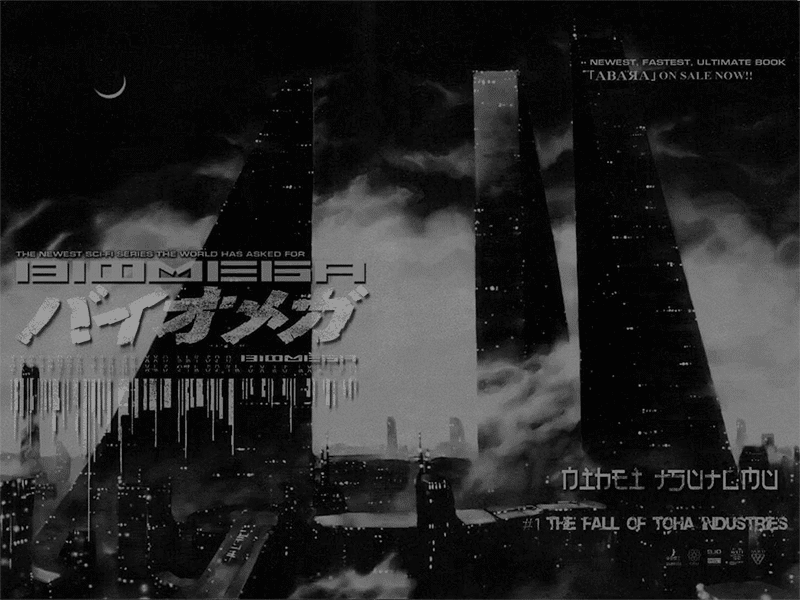
But Biomega isn’t just a carbon copy of Blame!, it’s also vastly different in many other ways.
It’s a fantastic and creative manga that pushes Nihei’s visual story-telling even further than Blame! It features Nihei’s usual dark and gritty style and the insane action so common in Blame! However, Biomega drives those things even further.
Biomega is an insanely fast-paced cyberpunk, zombie apocalypse manga full. It’s as weird and insane as it sounds, but the second half of the manga gets even weirder.
Biomega – Plot
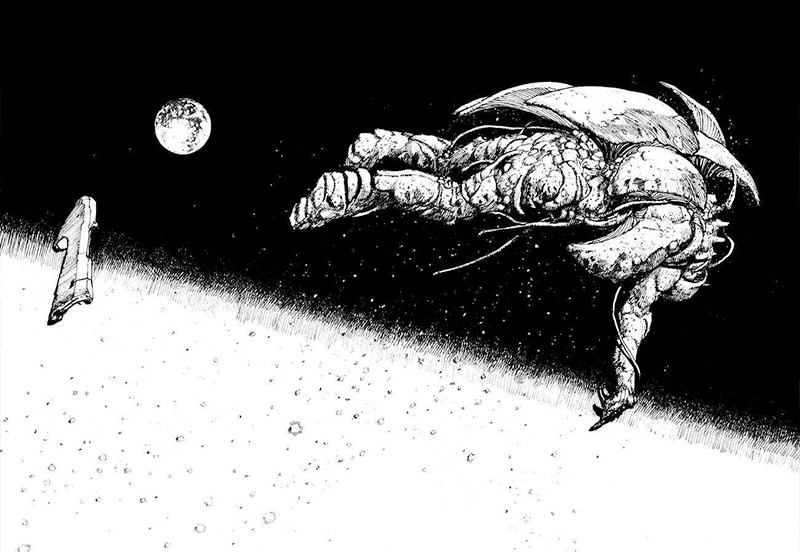
Biomega’s plot is hard to describe. The manga’s plot is as weird as it is surreal. At the outset of the story, most of the world population has turned into drones, who are basically zombies, because of the spreading N5S virus.
It’s soon revealed that the Data Recovery Foundation (DRF), a mega corporation, and its subsidiary, the Public Health Service (PHS), are trying to continue the spread of the virus to transform humanity.
Opposing them is Toha Heavy Industries, another mega-corporation who sends out synthetic human agents, one of them Zouichi Kanoe. He’s tasked with finding Ion Green, a young woman who’s adapted to the N5S virus.
Toha Heavy Industries searches for her and other people who have adapted to the N5S virus hoping to find a cure and to save the world.
And thus Zouichi, and Toha Heavy Industries find themselves in conflict with the DRF, the PHS and their many forces.
Biomega – Setting
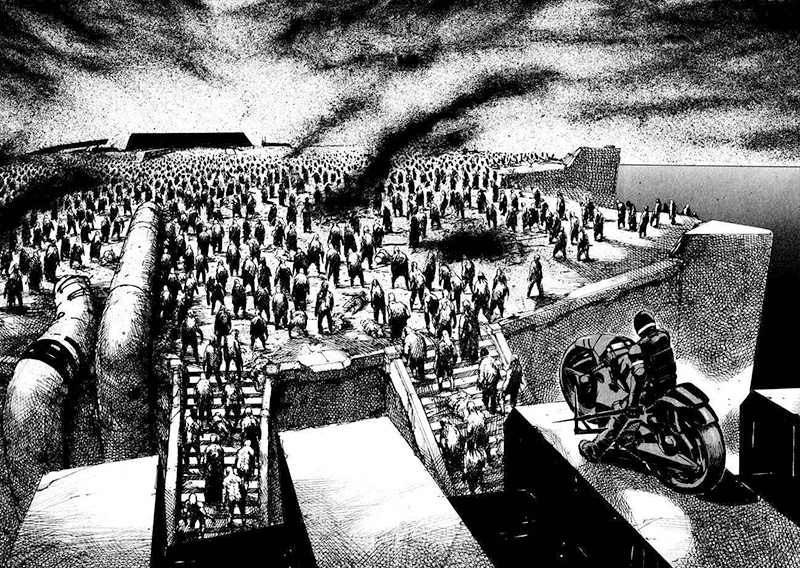
Similarly to Blame!, Biomega features an apocalyptic setting. Again, we don’t witness the world before the apocalypse. Instead, we’re thrown right into it and witness a derelict world devoid of normal humans and populated by twisted and disturbing drones.
Over the course of the manga, however, the setting changes radically.
While the first half of the manga is set on a dark, gritty and futuristic version of Earth, the second half of the manga is set on an entirely different world.
It’s a shift that makes sense in the story, but it’s strange, nonetheless. It’s such a radical shift that not only the setting, but even the nature of the plot changes. The entire manga becomes less dark, grim and gritty and much less fast-paced.
Biomega – Story-Telling Conventions
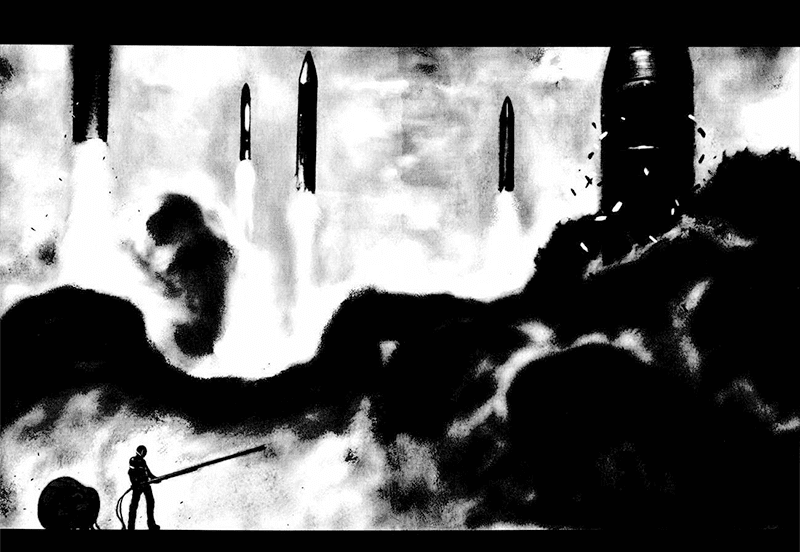
Like many of Nihei’s earlier works, Biomega is a highly unique manga that’s not for everyone. It’s a story told more via visuals than via dialogue, extremely fast paced and full of action.
Visual storytelling
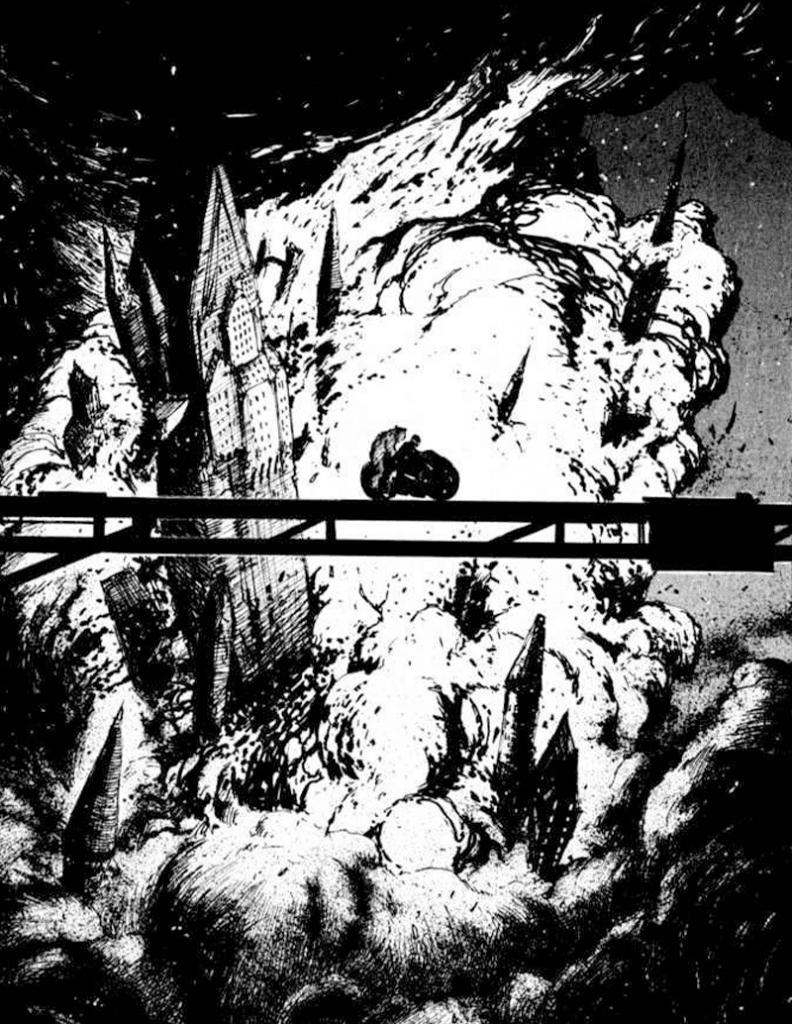
An old saying goes, a picture says more than a thousand words, and it’s no more true than in the works of Tsutomu Nihei and especially Biomega.
Biomega is another example of a story being told via the setting and visuals. There’s no exposition, no explanations and instead we’re thrown right into a zombie-apocalypse.
Similarly to Blame! there are entire chapters with almost no dialogue. Yet, Biomega differs from Blame! in one major aspect, the pacing.
Biomega’s pacing is insanely fast, almost too fast and most of it is presented to us via visuals.
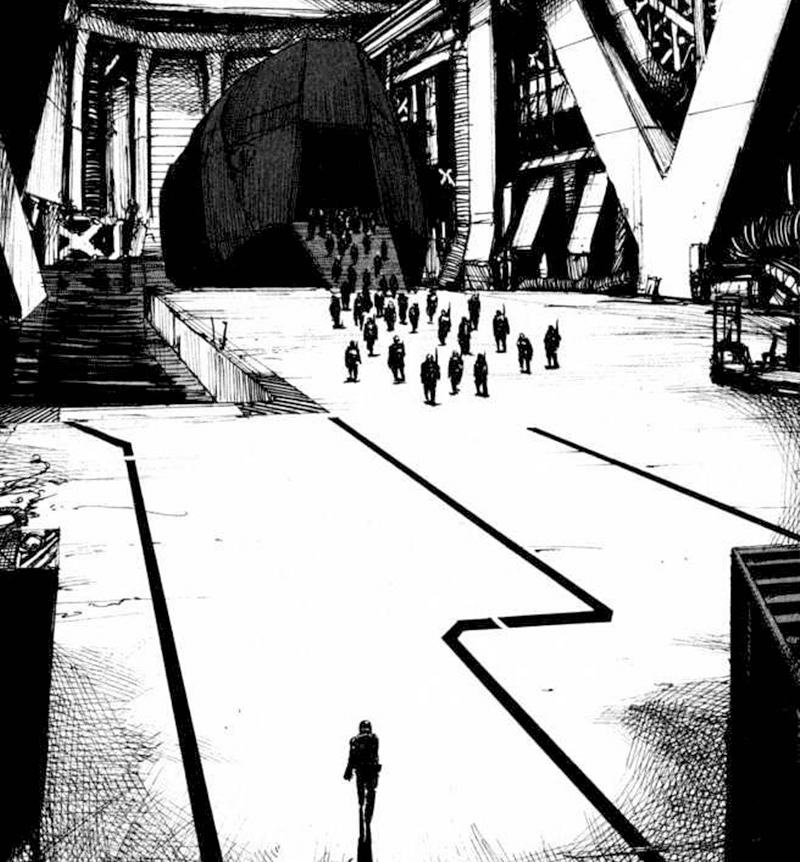
There’s always something happening, the story is always moving forward. There are no slow, somber chapters like in Blame!, at least in the first half of the manga, and this can make it hard to understand what’s going on.
Even dialogue is faced-paced, lines are omitted and only people’s reaction are shown to us. It’s an interesting choice, but it never confuses since we can always tell what was said before or what question was asked.
An example is when a certain character gets infected. We don’t see Fuyu telling her she’s infected or what happened to her, instead we only see her reaction and understanding of it.
This makes Biomega such a fast-moving manga. It feels almost like Nihei was reluctant to use dialogue, and wanted his visuals and his setting to speak for himself. While it might sound strange, it works in case of Biomega and makes it such a unique experience to read.
World building
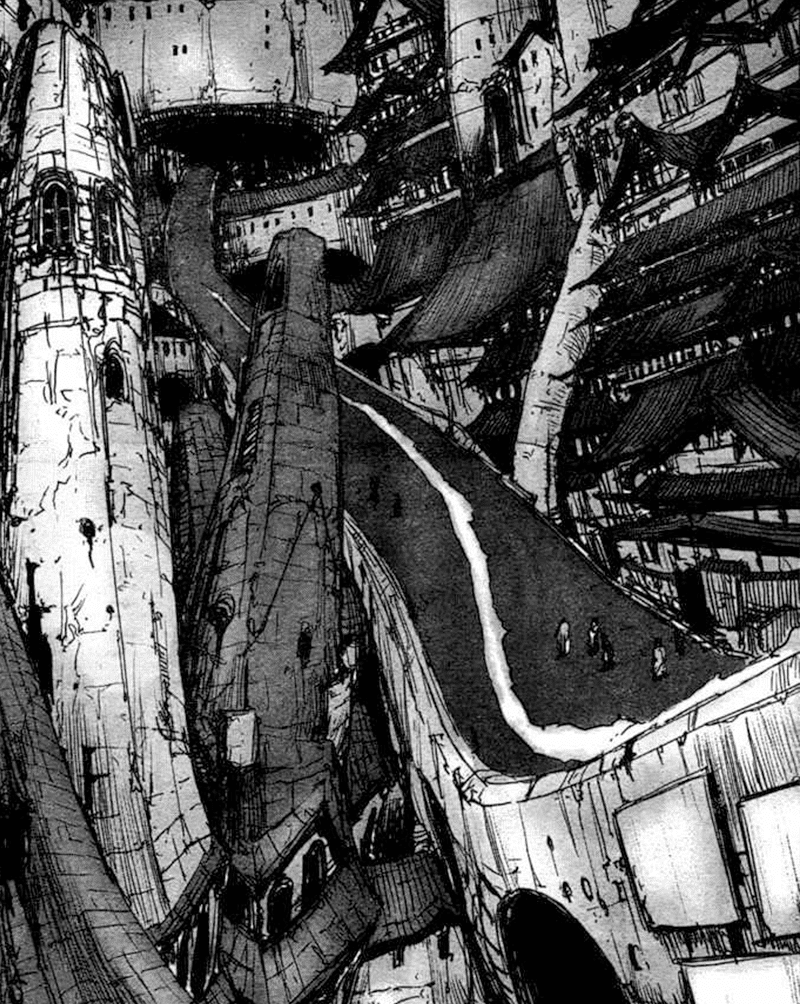
As in other works of Nihei’s, the world-building is done mostly via visuals.
What makes Biomega’s world-building so special is that the manga’s set in two vastly different worlds.
The first part of the manga is set in a futuristic version of the world. Yet, with the apocalypse setting in, it’s a derelict, bleak and ruined place.
It’s a world full of claustrophobic cities and complex urban sprawls.
The apocalypse is almost feasible, since the world is an empty place. As Zouichi and other characters travel through cities, they are almost completely empty, only populated by drones.
It’s a vast technological wasteland, devoid of anything in it but giant structures and military installations. This bleak atmosphere is even more feasible than in Blame!
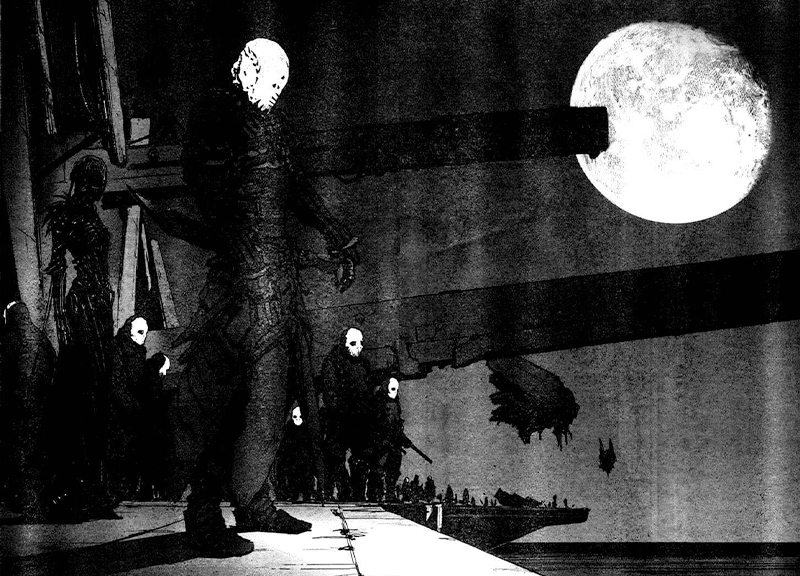
After the first half, the manga’s setting changes radically and the second half of the manga stands in stark contrast to it.
What used to be the dark, futuristic cityscapes of a future earth are replaced by unique bio-mechanical environments that look more grown than built. It’s a world reminiscent of such works as Nausicaä teeming with strange bio-mechanical horrors.
It’s a world that appears almost like a fusion of nature and the artificial, one that looks more plantlike, almost organic. We see giant structures reminding us of bones, holes akin to pores and the many life forms Zouichi encounters appear like parasites.
This strange mixture of the biological and the technological also shows in the many inhabitants of the world, be it humans or other organisms.
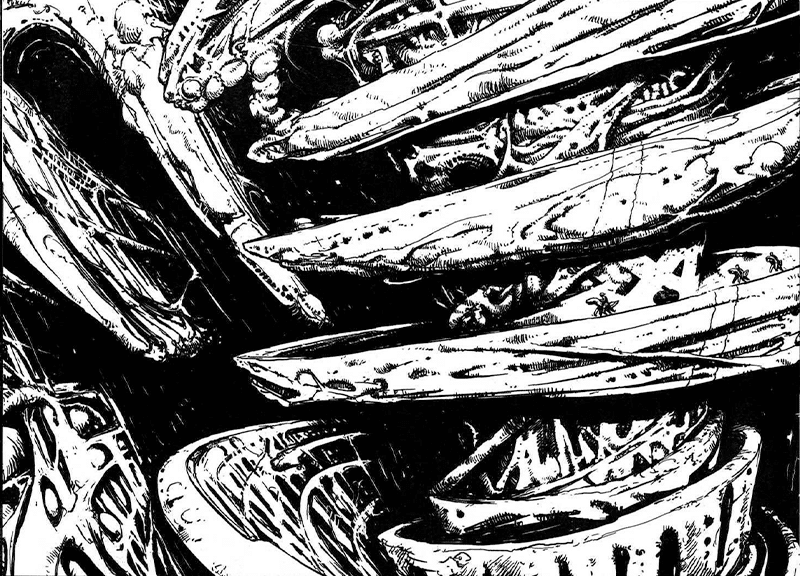
And yet, this second half is more reminiscent of Blame!. The manga now takes place in a strange new world of immeasurable proportions, where humans have to survive against terrible odds.
Yet, what both worlds have in common is Nihei’s attention and focus on grand design. In the first part of the magna, it’s visible in the many gigantic cities, high-tech complexes and military structures.
This goes more out of hand in the second half. The new world has a width of only 100 kilometers, but a length of 4.8 billion kilometers, essentially stretching out from Earth to Neptun.
It’s this dual-setting that makes Biomega such a unique, but also strange manga. Both worlds, however, are rendered in beautiful detail and are given a lot of attention.
Characters

Biomega is weird, way weirder than Blame! and it shows in its assortment of characters. These include our main characters, Toha Heavy Industries synthetic humans, but also immortals, a woman who’s able to use ESP to understand and learn anything in an instant and a talking bear.
The synthetic humans, Zouichi and Nishu, are very similar to the cast of Blame!. Zouichi is pretty much a replica of Killy. He’s neigh immortal, has superhuman strength and abilities, can heal himself after receiving severe damage, and can go long periods without the need to drink or eat. The major difference, however, is Zouichi’s showcase of emotions. As opposed to Killy, Zouichi, at least in certain scenes, shows strong emotional responses and seems to care about other people.
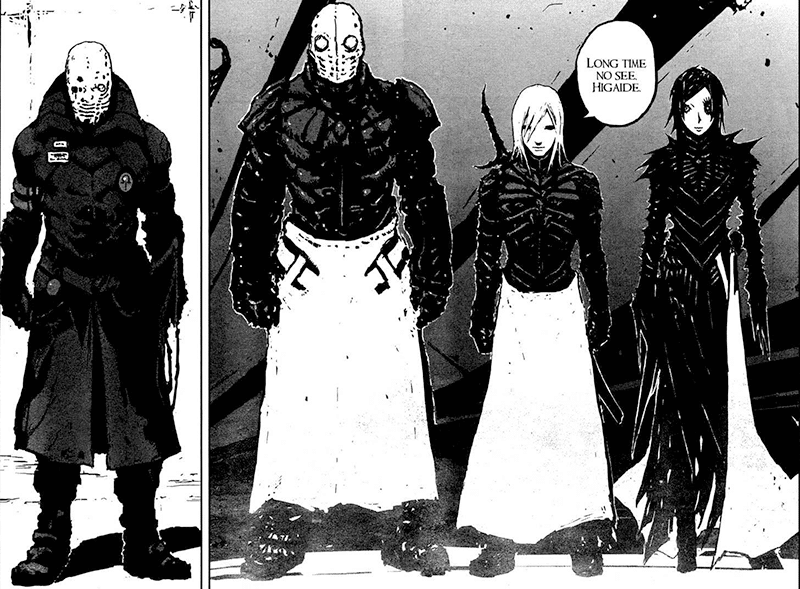
Yet it’s not only the synthetic humans who are badass. Each one of them has an AI companion who is integrated into the motorcycles they drive. This allows them to use their own assortment of weapons, including a railgun and tentacle like chais that can help them attack, move and even shield them from serious impact.
Kozlov the talking bear while a weird character is a great addition to the cast. Against early assumptions, however, he’s not merely there for contrast and comical relief, no he’s much more important to the story than anyone would expect.
The antagonists, including the aforementioned woman with ESP, are also great, are interesting as well, but aren’t featured heavily. Yet, their clear, sociopathic ambition and grand plan makes them more interesting than those of Blame!
The Story
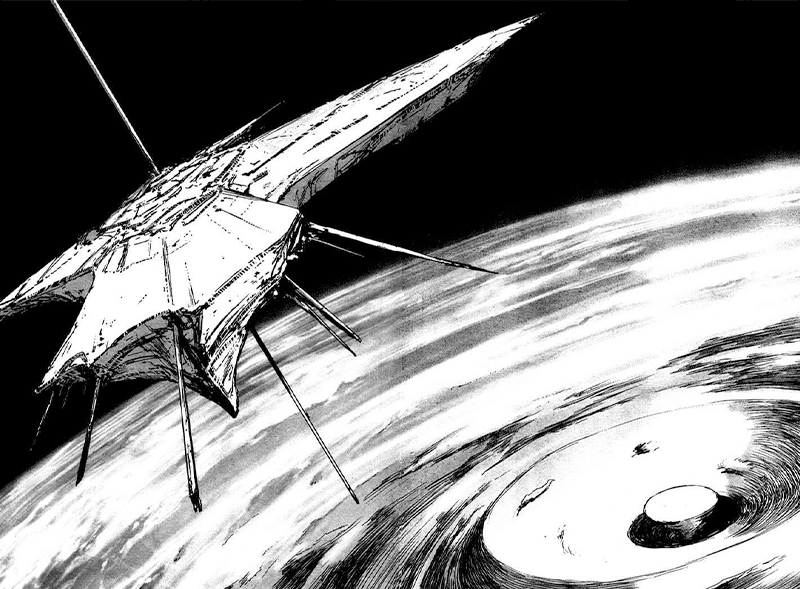
Nihei’s manga, especially his earlier works, don’t follow conventional story-telling tropes. His stories are often confusing and sometimes ambitious.
While Biomega starts of simple and straightforward, it soon becomes confusing and hard to follow. This can in part be attributed to the incredibly fast pacing in which large parts of the manga are told.
Similarly to Blame! much of the story and its backgrounds are only revealed as we read on. Important details are given to us sparely and we have to put them together on our own.
Yet, if you read carefully, and follow what little dialogue there is, you will understand the story almost completely. The motifs of the DRF, Niardi’s plan, her conflict with Narain and even what lead to it are all revealed.
However, Biomega might be a manga that needs to be read twice. It’s a weird piece of work and especially the second half can be very confusing.
Horror
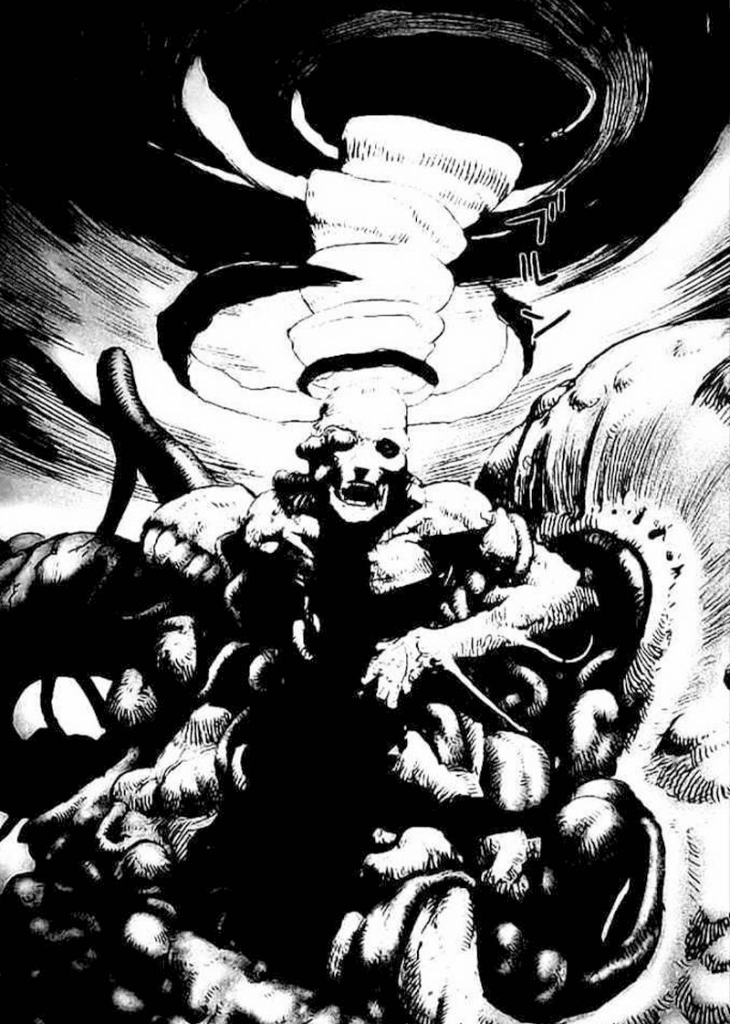
While Biomega is a cyberpunk manga, it could very well be categorized as a horror manga as well.
There’s, of course, the plot. The N5S virus outbreak is akin to a zombie-apocalypse, and the many twisted and distorted drones are horrible to look at. This is also true for the many antagonists. The DRFs Patrol officers look as if they are straight out of a horror movie. The PHS task force is reminiscent of execution squads, and the many transformations are as horrible as they are fascinating.
Yet, that’s not all.
Nihei’s horror also manifests in its setting. While Zouichi and others visit vast cities, they are almost completely abandoned and empty. It gives the entire manga a moody feeling, one of isolation and claustrophobia.
In the second half, the world is a dangerous and alien place, and once more, a world in which normal humans are almost meaningless and unimportant. This world is so big that distances become meaningless and time is measured not in months or years, but in centuries. It’s a horrible wonderland of immeasurable proportions.
Themes
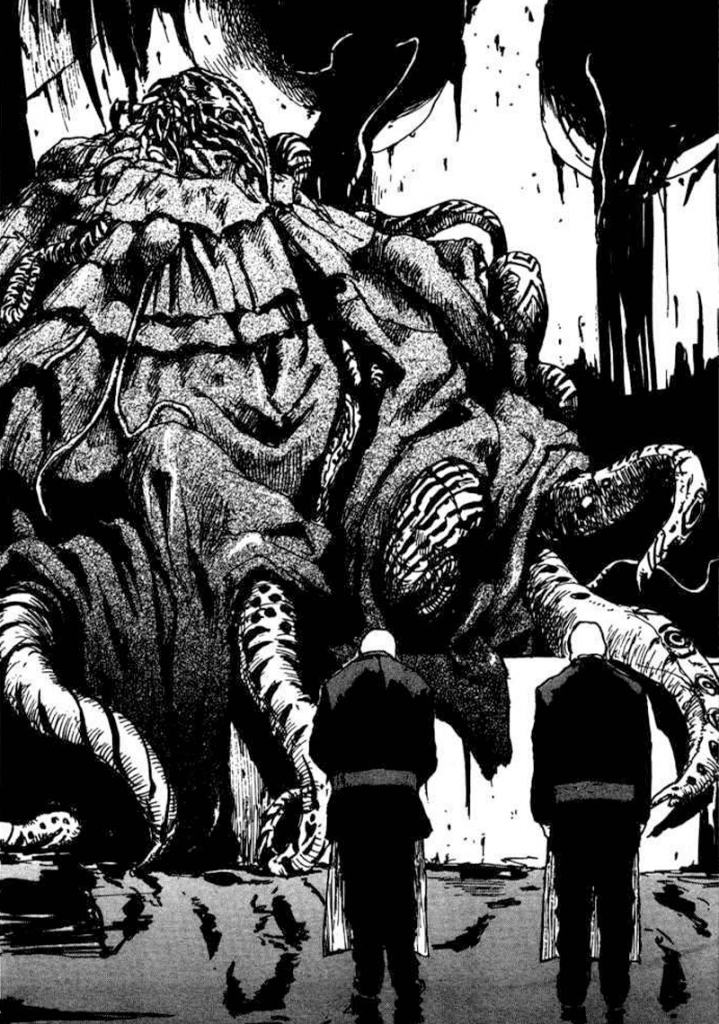
I want to take some time to talk about the many themes in Biomega. The first theme, of course, is a cornerstone of cyberpunk. We don’t have countries anymore, we merely have giant cityscapes and the world is controlled by giant megacorporations, fighting each other.
While Toha Heavy Industries is benevolent and wants to save humanity, the DRF is the polar opposite. At the outset of the story, they declare themselves the world government and plan on infecting all of humanity with the N5S virus.
The evolution and the ascension of humanity are another theme. Over the course of the story, we learn why Niardi, the DRF’s overlord, wants to infect humanity. She essentially wants to wipe out normal humans and build a new world with only those who are immune and have adapted to the virus.
Another important theme in Biomega is that of immortality. One of the major conflicts in the manga is one of pro-immortality against pro-mortality.
The Big Switch
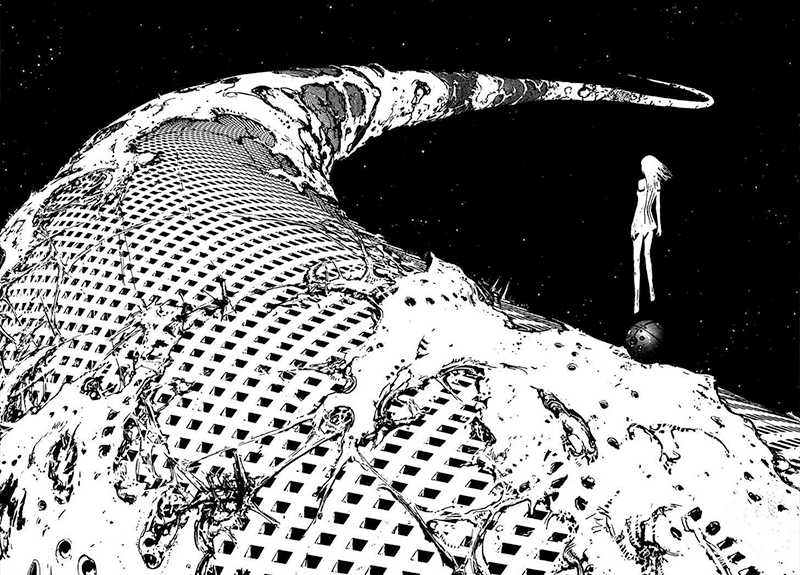
The Big Switch is how I’d like to refer to the change that occurs between the first and the second half of the manga.
While the first half of the story represents us with cyberpunk in all its glory, what comes after chapter 27 is entirely different.
It’s not only the setting that changes radically but also many other elements of the story. The general pacing slows down, the plot changes, but with it also the elements that are used to tell it.
The second half of Biomega almost feels like a different manga. As outlined before, it can almost be called a genre shift. What started out as an apocalyptic cyberpunk manga is now more akin to a fantastic travel set in a setting that’s a mixture of cyberpunk and biopunk.
This Big Switch is one of the weirdest occurrences of its kind I’ve ever witnessed in a manga. While many manga comprise different art styles and their settings evolve, I’ve never seen one as rapid and radical as the one in Biomega.
It doesn’t ruin the manga, and it even makes sense in terms of plot, but it’s still extremely weird and can be very frustrating to some readers.
Biomega – Visual Style
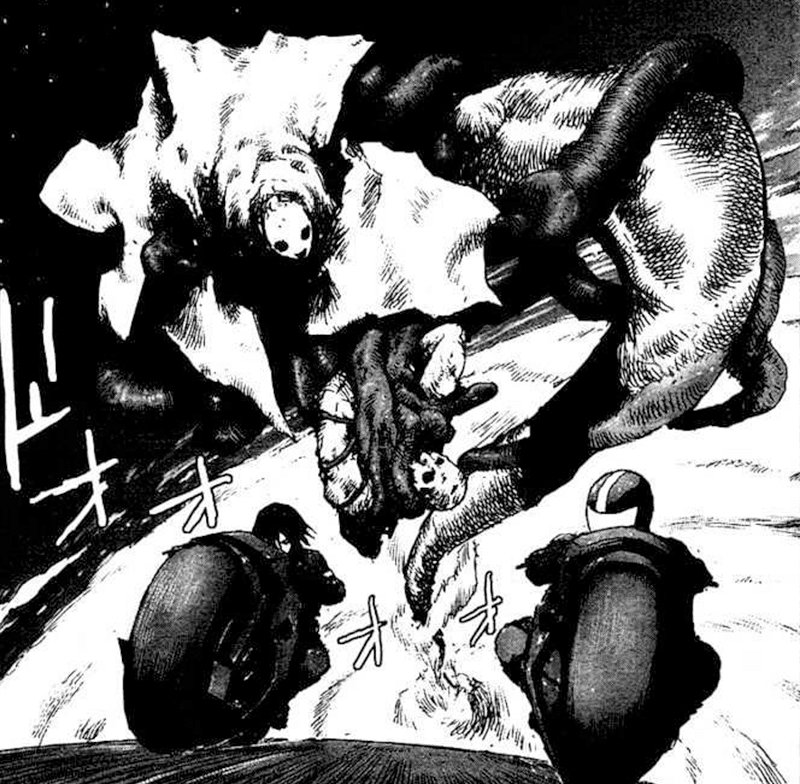
Similarly to his masterpiece Blame!, Biomega’s art is full of vast expanses and gigantic structures. Yet, even though his style depicts this unfathomable scale, it’s always incredibly detailed. This makes Biomega a delight to experience.
As opposed to Blame!, however, Biomega is much darker in its depiction and feels dirtier and sketchier, especially in its first half. This adds a lot to the atmosphere and the apocalyptic setting of the manga.
Gigantic Proportions
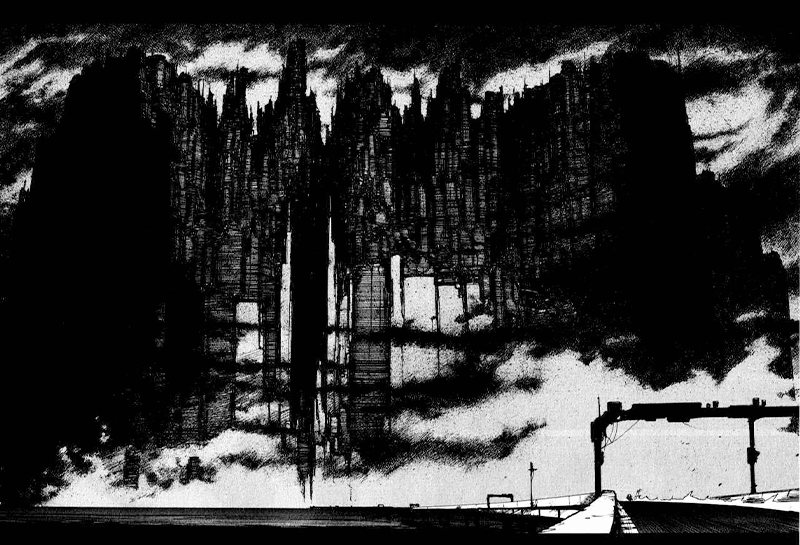
Gigantic Proportions are a staple of Tsutomu Nihei’s work and Biomega doesn’t disappoint.
The Earth depicted in the first half of Biomega is a dark and surreal place. It seems to comprise nothing but towering cities connected by impossibly long highways.
What’s interesting about Biomega is that while it’s said in the future, many of the cities showcased have a distinct gothic look to them. They don’t look like the gigantic, pristine megastructures made of steel we’re used to from Blame! Instead, they look unorganized and wild.
Buildings are crowding together, almost pushing against one another. Every space between them is taken up by streets, pipes and cables. These pipes and cables are going everywhere and sneak around buildings in an almost chaotic fashion.
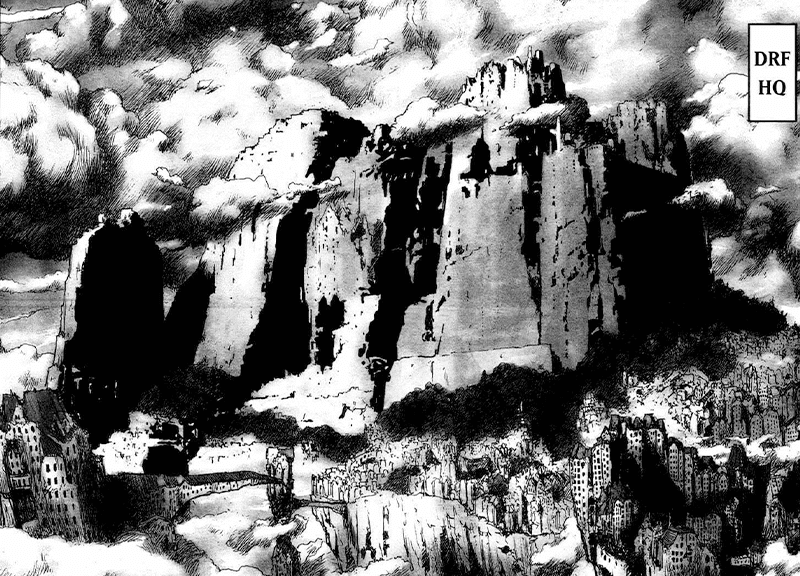
This strange futuristic, yet gothic architecture gives the cities of Biomega an almost organic style and makes them appear something that was grown rather than built.
And yet, these densely constructed cities are bleak and empty. Everything’s deserted, almost derelict, and we rarely see any people.
All of this gives Biomega a strangely eerie and claustrophobic feeling.
Art, Colors and Shading
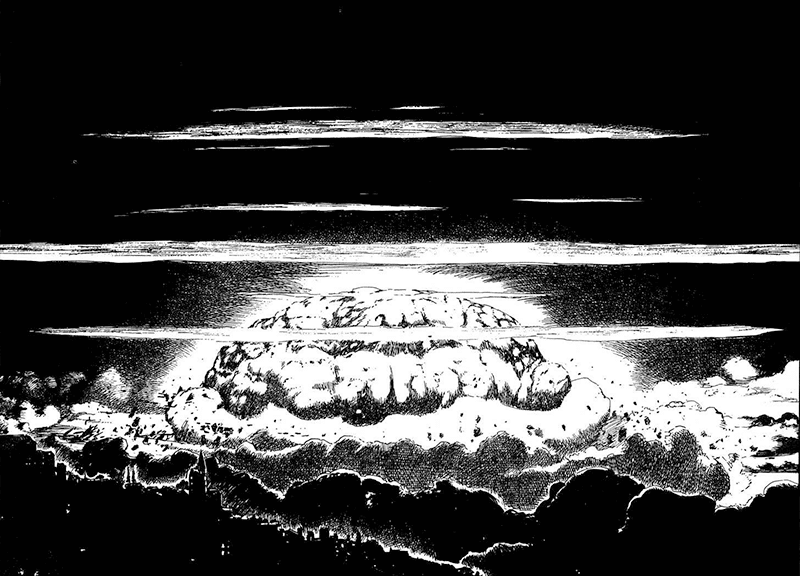
Biomega is a dark manga, one that seems much darker than Blame! It gives the entire work an almost oppressive, gloomy atmosphere. Yet, it’s more than fitting for a story such as Biomega.
Cities are broken down, dark and their specific gothic design and color choice make them reminiscent of giant haunted houses. What adds to this feeling is Tsutomu Nihei’s personal style. While his art is sharp, many of Biomega’s cities feel as if they have no hard outlines, adding to the general feeling of isolation and desolation.
Biomega is a dark manga. Tsutomu Nihei uses lots of heavy blacks to depict the desolate, apocalyptic Earth. In many of these pages, black is not only the dominant color but also the dominant feeling. There’s a murky darkness that lays over the entire manga and adds so much to the atmosphere and general feeling.
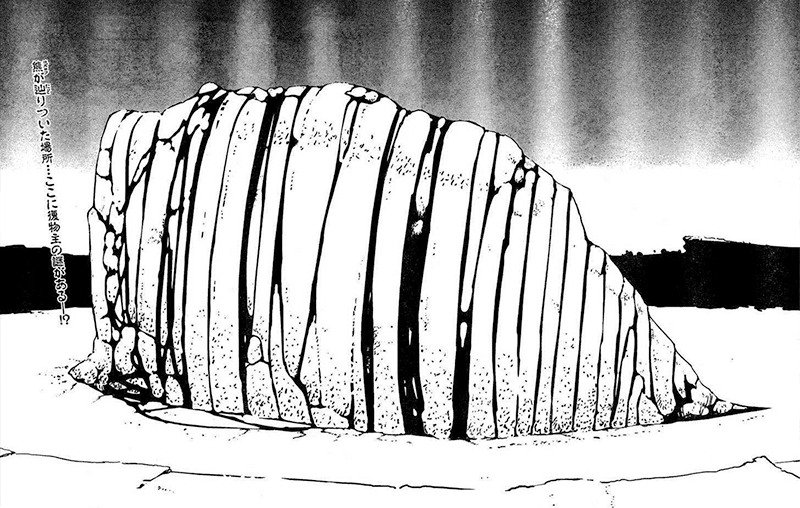
Similarly to Blame!, Tsutomu Nihei once more relies on strong contrasts between white and black. This is most prevalent in his use of negative spaces to convey light and huge explosions.
What’s most interesting about Biomega, however, is the switch that happens in the second half of the manga. While black is the most dominant color, the second half is dominated by white. This visual changes and change in color usages adds to the general change the manga goes through in its second half.
Character Design
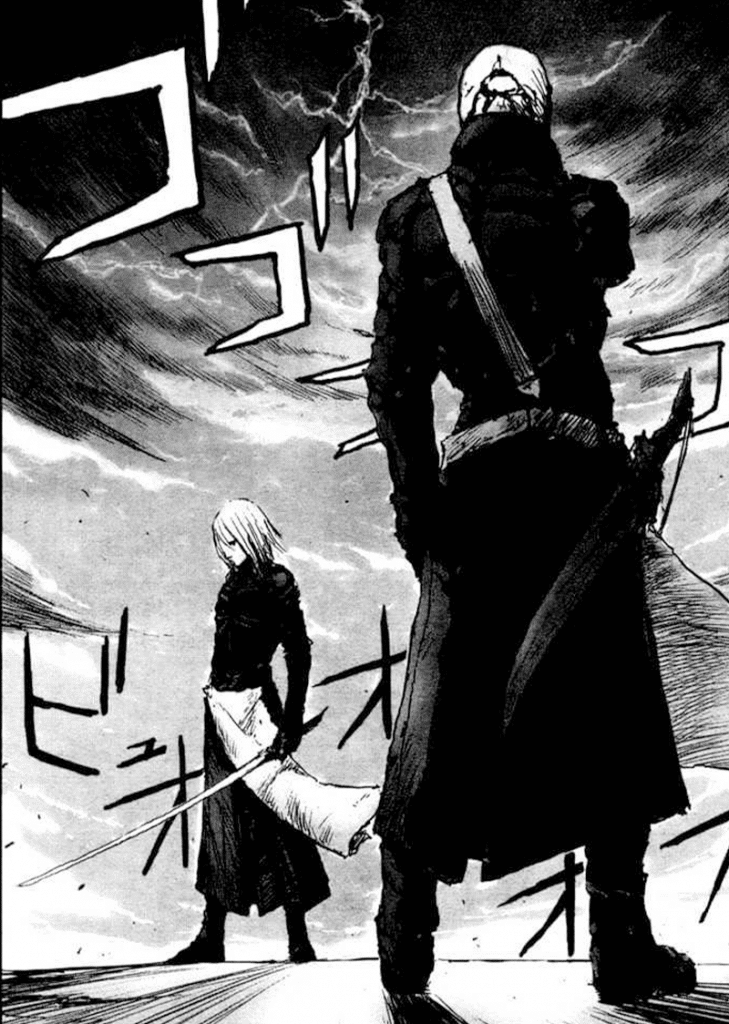
The character design in Biomega is reminiscent of that in Blame! What’s interesting about Biomega is that while the art, and especially the setting, is sketchy and dirty, character are often refined and detailed.
It’s most prevalent in the character of Zouichi. He might drive a futuristic motorcycle, but apart from that, he appears very similar to Killy, the main character of Blame! It’s not only his appearance but also his demeanor and weapons.
The DRF and especially their various cybernetic horrors are similar to the silicon life. However, their design and especially their transformations look more biological and organic than anything else.
The same can be said about the drones. While they are basically zombies, Tsutomu Nihei makes them truly disturbing and nightmarish to look at. They came with strange growths, elongated limbs, and are twisted and deformed. It gives them less the appearance of general zombies, but more of that of weird mutants. They are horrible delight to look at.
Body Horror
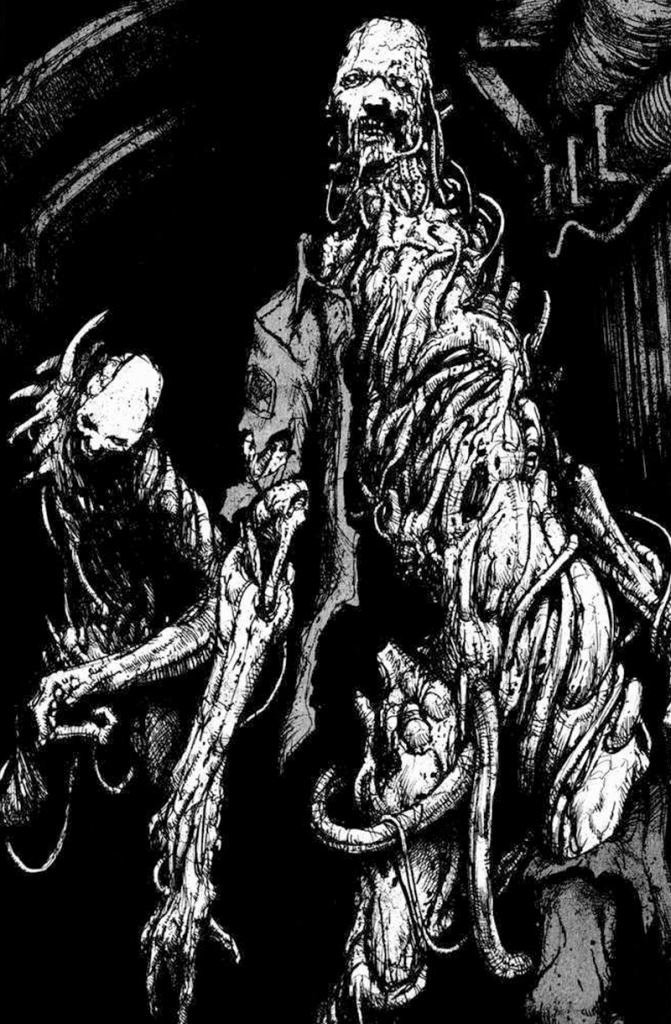
While Tsutomu Nihei’s earlier work Blame! had its fair share of horror, Biomega features much more.
The world of Biomega is ripe with body horror. We’ve got the horribly distorted drones, the cybernetically enhanced humans and even twisted and mutated biological monstrosities.
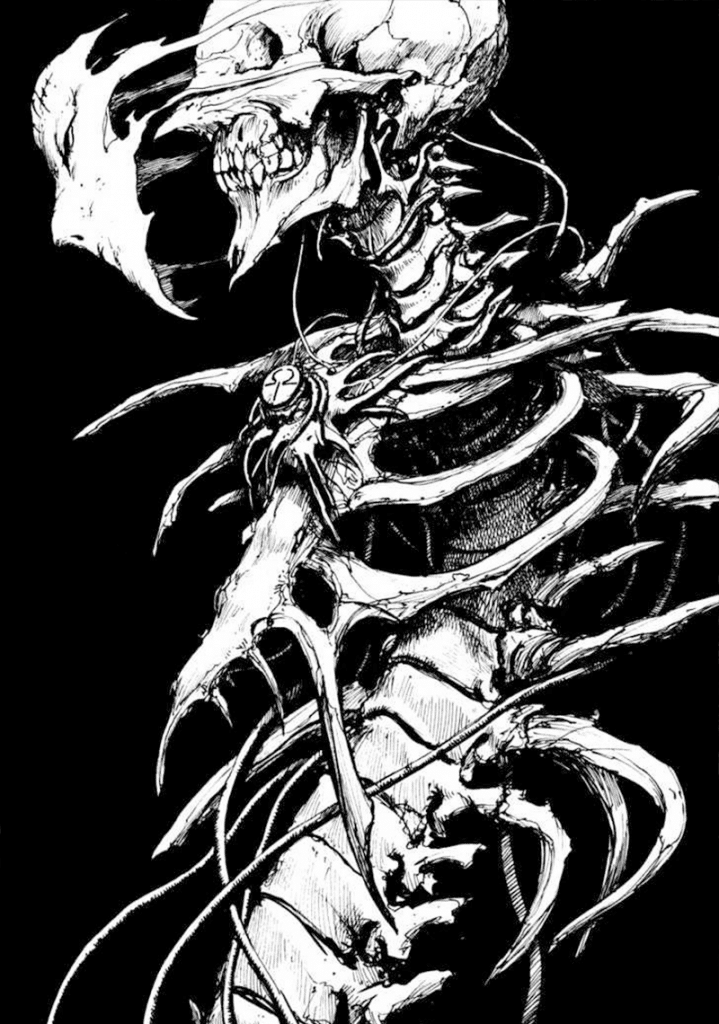
A great design choice is that of the DRF’s patrol officers. Their masks and aprons give them a distinct design, one reminiscent of butchers or even serial killers in slasher movies. And, of course, they are as deadly as they look creepy.
Biomega features a lot more horror though. Gore and violence are much more prevalent here than in Blame! People are being shot and torn apart, their heads are exploding, and we witness copious amounts of blood. It gives the manga a brutal feeling, one more reminiscent of a horror manga than a science-fiction or cyberpunk one.
Action
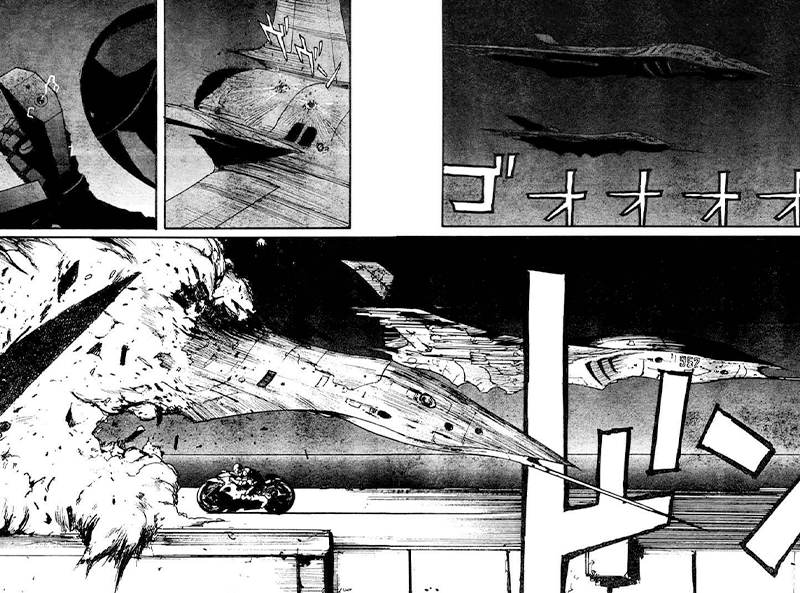
Biomega is a manga that’s insanely fast paced and full of action. Its pace is much, much faster than almost any other manga I’ve ever read.
This pace adds a lot to the action. It’s often ramped up, fast, depicting only the most important details and over before you know it.
Instead of detailing fights or action-sequences, they are often shown in short, high-paced panels. At times, Biomega skips entire fights. We’re only shown the outset, and skip right to the end a few panels later.
However, this can be a tad bit confusing. There’s almost too much going on in some chapters. This is especially prevalent when Zouichi makes his way back to the Toha Heavy Industry’s headquarters. It is here that he takes on an entire battalion of fighter planes and even a carrier, and takes them down in only a handful of pages.
Yet, this doesn’t mean that the action in Biomega is bad. By now means, it’s kinetic, gory, and insanely fast paced. What we see, however, is absolutely fantastic.
The Big Switch
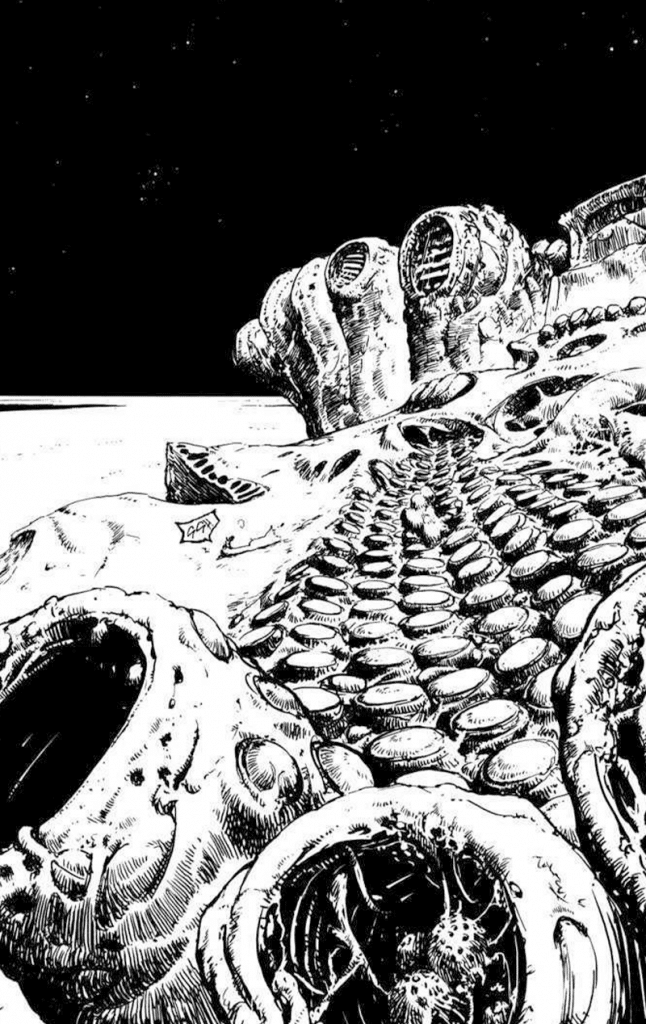
I mentioned the Big Switch before in terms of story and setting, but it’s also prevalent in the art and visual style of the manga.
The first half of Biomega follows a more realistic style. It’s set on Earth, even if it’s a derelict and desolation version of Earth. Most of the human characters look like actual humans or humans who have been modified.
In the second half of the manga, all that changes. As the setting becomes more fantastic, so does the style. The world is now populated by strange mechanised humans and biotechnological creatures that look almost entirely organic.
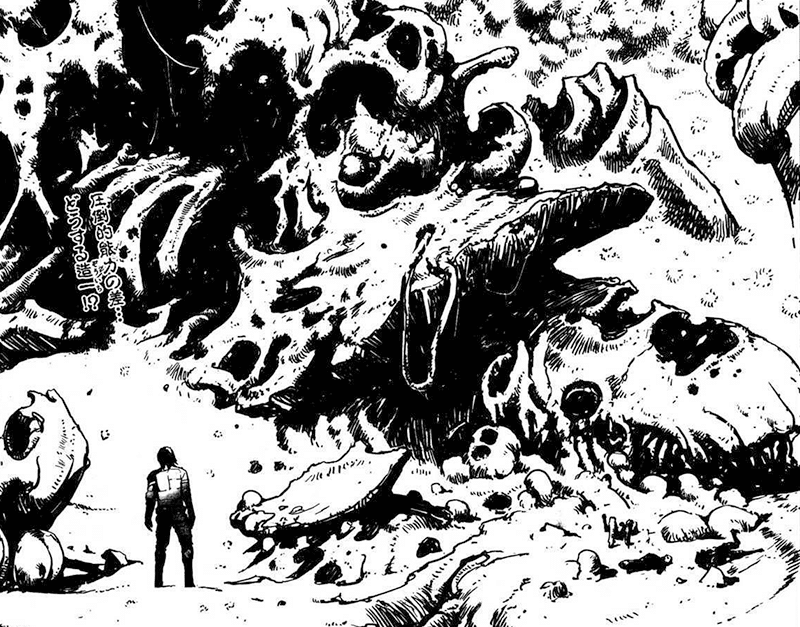
This, however, is most prevalent in the visual style of the manga changing. While black dominates the first half of the manga, the second half is dominated by white spaces. It also feels less sketchy, dirty and claustrophobic. Instead, it feels almost clean, fantastical and similar to Blame! impossibly large.
What’s also interesting to see is that this change in style is not only one in terms of colors but also in character design and general style. Tsutomu Nihei’s style changes vastly between the beginning and end of Biomega.
It’s near the end of Biomega when certain areas and characters are depicted one can see the first outliers of his style in Knights of Sidonia. It’s an interesting transformation to behold, one that also adds to the change in setting and story. Yet, I have to admit that I’m more a fan of Tsutomu Nihei’s grim dark worlds and setting and less a fan of his more recent, lighter style.
Criticism
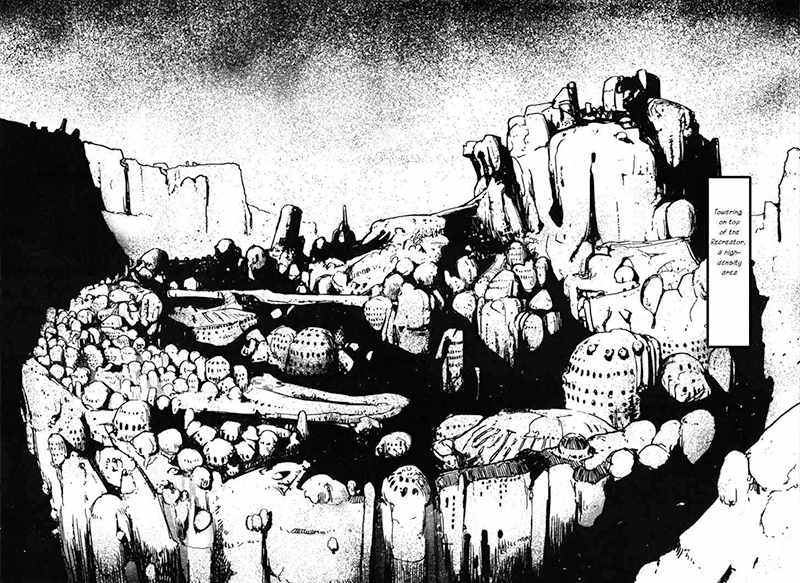
While I consider Biomega a visual and action-packed masterpiece, there are still some problems with it I want to discuss.
The first is, of course, what I call The Big Switch. It’s such a strange choice, almost a complete switch in terms of setting, story and visual style. While it makes sense in terms of the story, it’s still something that while make you wonder what exactly is going on.
The biggest problem I have with it, however, is that many important characters from the first half of the manga aren’t coming up anymore. There’s Nishu, but also Kahdal Spindal, who unfortunately never appear again.
Another problem with Biomega is that, it just moves too fast at certain times. In some chapters, the manga throws so much at you it’s hard to keep up with what’s going on.
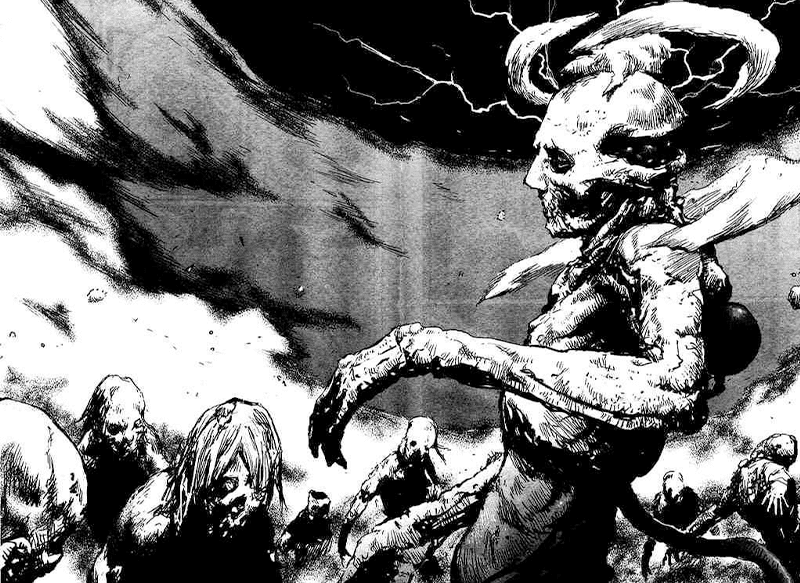
The last problem is once more Tsutomu Nihei’s way of story-telling. We’re thrown into an apocalyptic world, ravaged by a deadly virus without knowing what’s going on. There’s no backstory, no exposition, and no explanation. Once more, Tsutomu Nihei only reveals what’s going on by bits and pieces and the occasional, very short flashback. This can make Biomega hard to read and harder to understand. Similarly to Blame! I only could grasp the entire story on my second reread.
While Biomega has some problems as outlined here, it’s still one of my favorite manga of all time. It’s an insanely high-paced, action-packed cyberpunk-horror masterpiece that I’d recommend to anyone who likes the work of Tsutomu Nihei, visual story-telling or weird science-fiction manga.
If you want to read Biomega, I recommend ordering it on Amazon:





